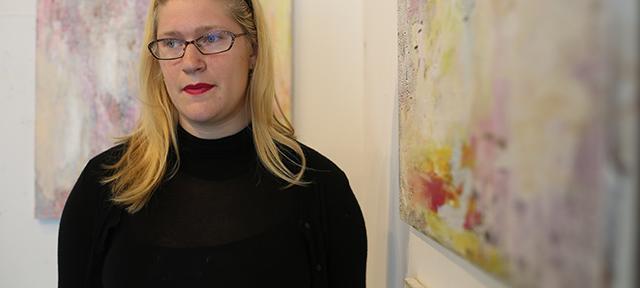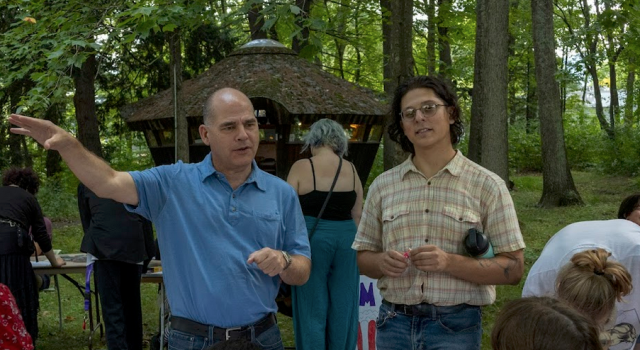Pustejovsky Examines Responses to Trauma through Music, Art, and Art History

Hometown: Boston
Faculty Advisers: Professor of Architectural and Art History Karen Koehler and Professor of Jazz and Contemporary Music Marty Ehrlich
Academic Intersections: Music, Painting, Art History
I’ve always been interested in the bizarre, drawn to the bizarre. Musically, I’m interested in things that make most people uncomfortable—loud noises, screechy noises, screaming, stuff like that. I wanted to explore why things that are harsh and frightening are capable of bringing people pleasure.
For my Division III project, I performed the fourth movement of Philip Glass’s Concerto for Saxophone Quartet and then I played a John Coltrane piece. I also did a piece, called “Experiments Concerning the Nature of Desire,” with my band, Skeleton Bloom.
I think the polyrhythmic, harmonically jarring, and at times unexpected nature of the Glass piece can be traced to ideas of challenging that which is regarded as beautiful; the piece is very beautiful to me, but this strangeness it possesses is part of what constitutes its beauty.
Coltrane’s piece was more broadly representative of my development as an improviser at Hampshire College, but I suppose one could argue that it provided a moment of consonance between two dissonant compositions. One cannot have dissonance without consonance.
I started my paintings in 2013. It’s very meticulous to complete this texture effectively. While I was doing my Div III, I had a lot of guidance and people telling me what to do, giving me ideas, and guiding me. I wanted to practice making my own decisions and discovering what I want for myself, outside of any authoritative figure. This series, entitled The Architecture of Memory, represents my practicing and training myself to discover what I really want for myself creatively.
The art-history paper was about World War I: how the war was a catalyst for a culture in Paris that was receptive to dissonant music and art and how the experience of the traumas of WWI led to a receptiveness to harshness. I explored Surrealism, Dadaism, and American jazz coming to France. The music I produced with Skeleton Bloom was music couched in Surrealist, Dada, and Freudian ideology and methodology and tackled ideas of desire, anarchy, and chaos.
The overarching theme of most of the things that I delved into were responses to trauma: what that does to a person, psychologically and socially, how people respond to it, and why it’s important in art.



